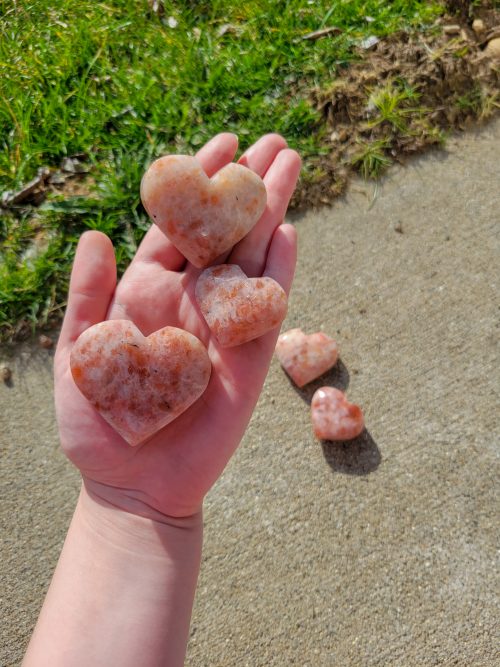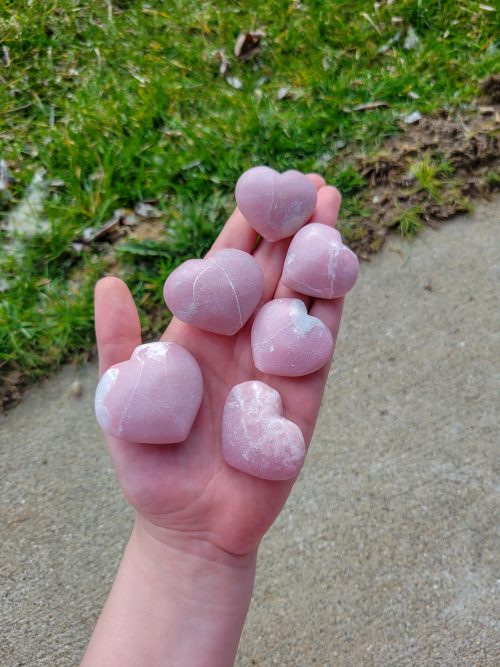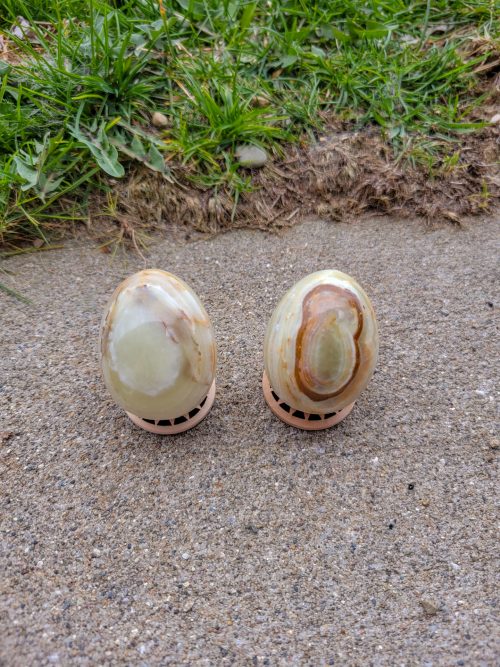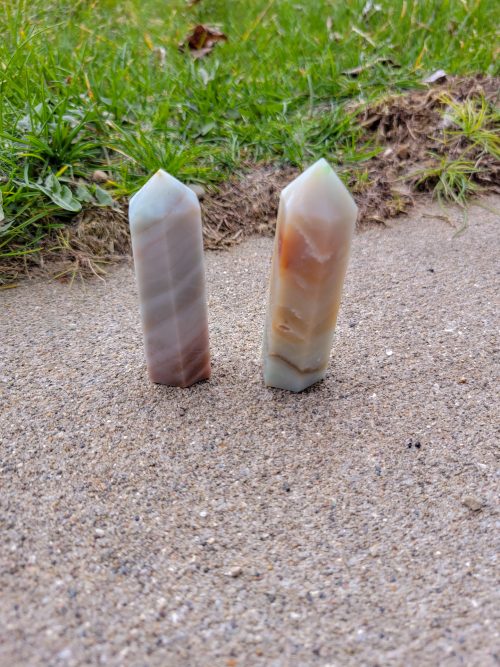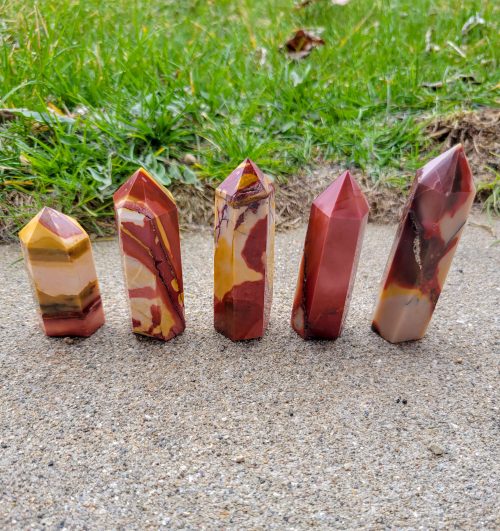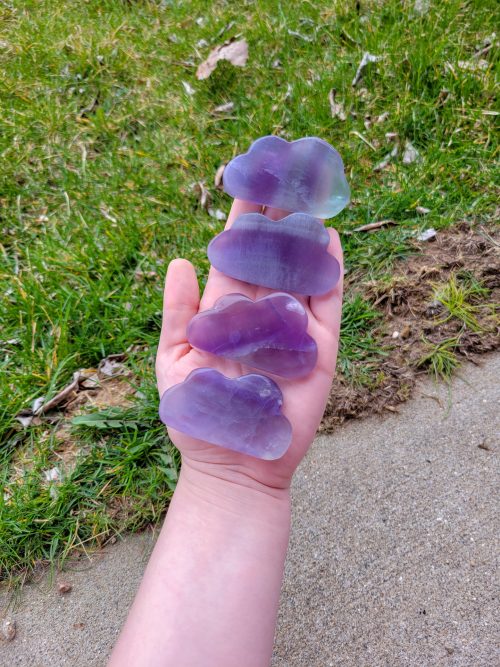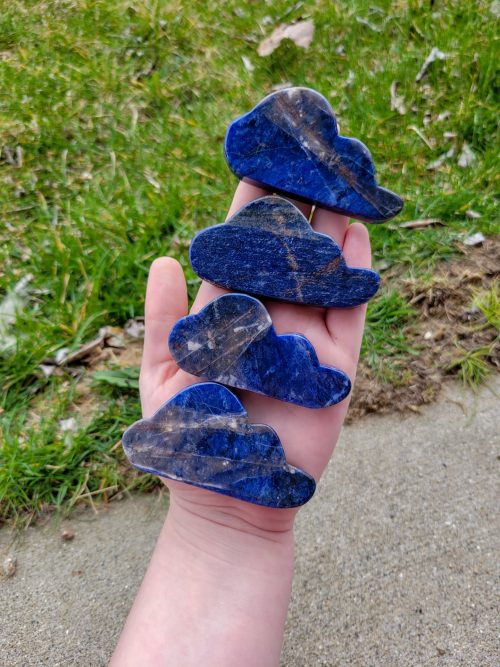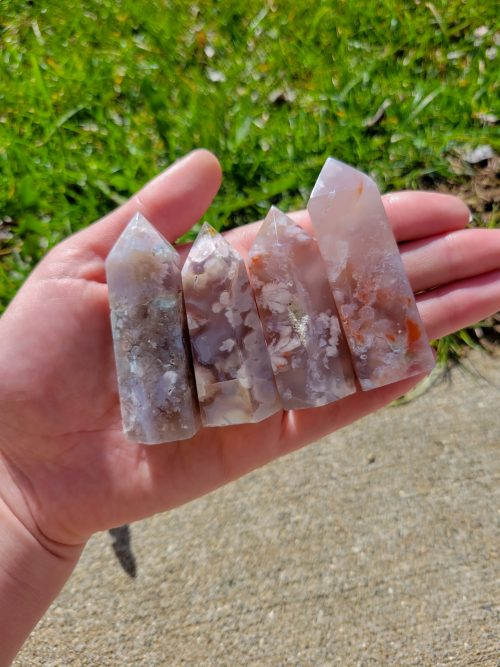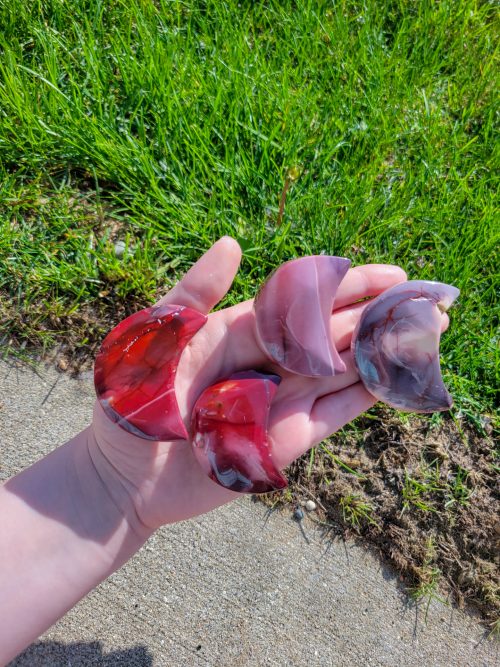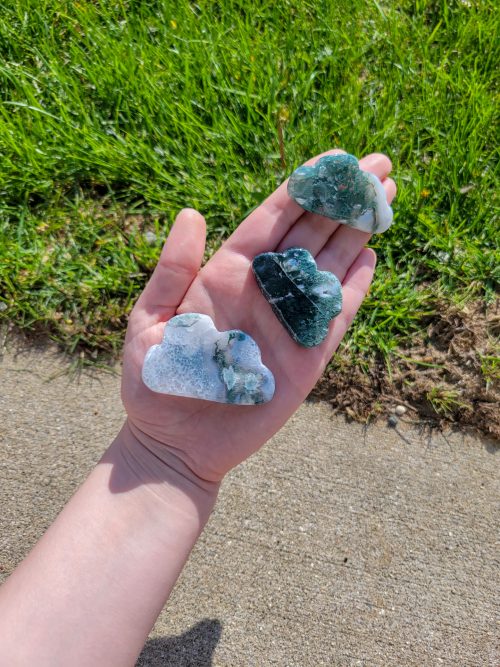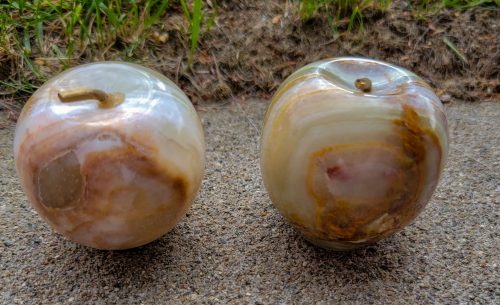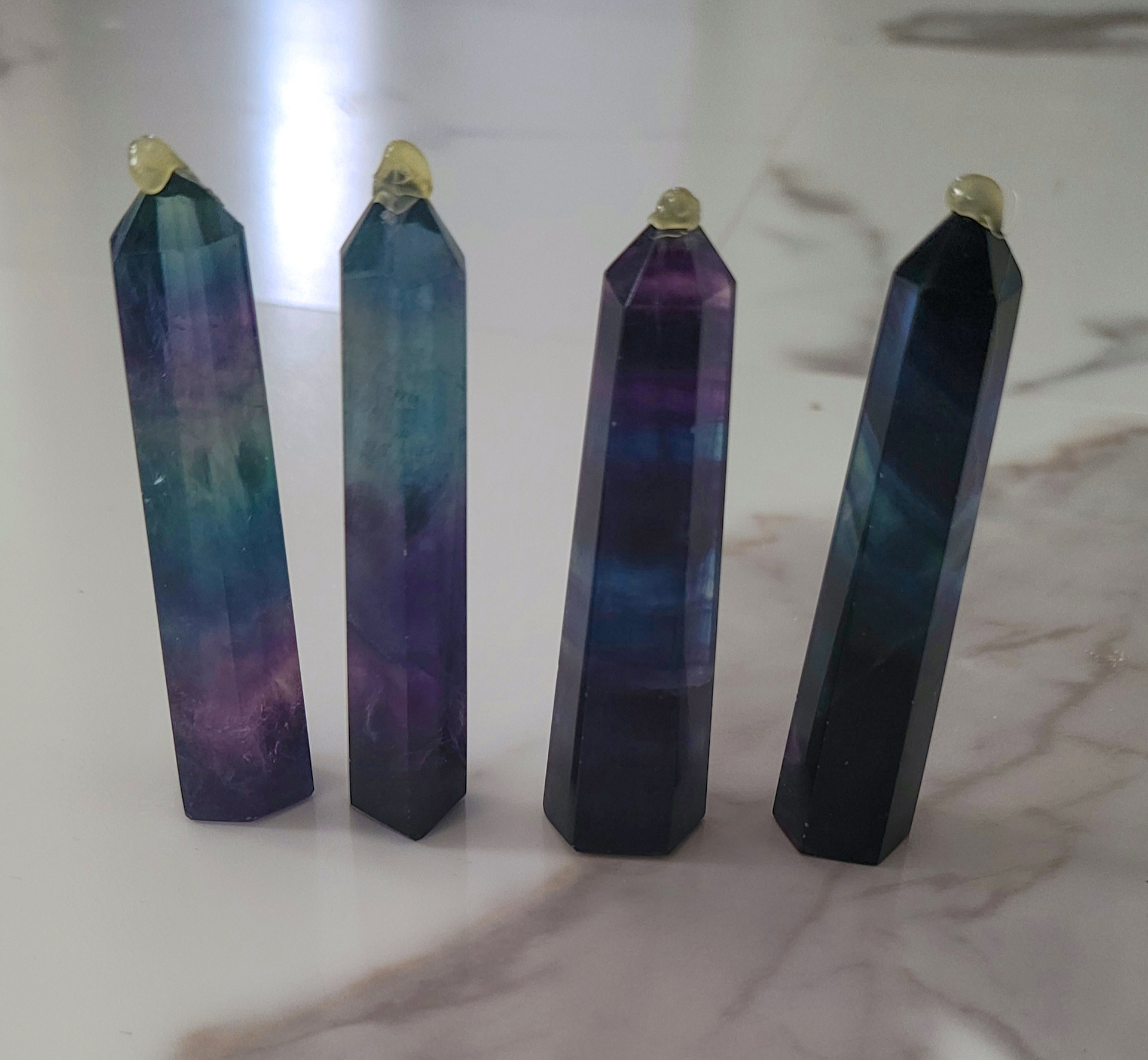-
5cm Wide Sunstone is a plagioclase feldspar. The glitter-like sheen in this stone comes from inclusions that are most commonly hematite but can also be goethite, pyrite, or copper (rare). This beautiful stone is formed in molten lava and can be found in many places around the world such as Australia, Canada, China, Congo, India, Mexico, Norway, Russia, Sri Lanka, Tanzania, the U.S. ***Due to natural variations in stones, appearance will vary***
-
5cm Wide Pink opal is formed by bubbling water near volcanic ash. It dissolves the silica and forms in nodules from volcanic activity. Most specimens contain pink opal mixed with minerals such as rhyolite. These beautiful specimens are only found in Peru and Australia. ***Due to natural variations in stones, appearance will vary***
-
5cm Tall Onyx is a banded variety of the oxide mineral chalcedony. Onyx and Agate are similar in that they are both varieties of layered chalcedony. The difference between the two is that agate has curved banding and onyx has parallel banding. The colors of the banding range from virtually every color possibility. Green Onyx is mainly found in Brazil, India, Madagascar, Mexico, Peru, and USA ***Due to natural variations in stones, appearance will vary***
-
7.5cm Tall Caribbean calcite is a very new combination mineral that was recently found in 2019 in Pakistan. It's a combination of a very light ocean Blue Calcite and light brown and white aragonite. Although recently discovered, this mineral is not expected to stick around for long unless more deposits are found in other areas. ***Due to natural variations in stones, appearance will vary***
-
6.25cm Wide Fluorite is composed of fluorine and calcium and is formed in hydrothermal veins in the Earth's crust. This mineral can be found in all colors of the rainbow with different hues. The different colors in Fluorite are caused by impurities within the mineral. The deeper colors are found in well-formed crystals. Fluorite was originally discovered in Illinois in 1842 but is no longer mined in the US. It can be found in China, South Africa, Mongolia, France, and Russia. ***Due to natural variations in stones, the appearance will vary***
-
8cm Wide Sodalite is a rare mineral formed inside igneous rocks crystalized as a result of sodium-rich magma. The blue color comes from the rock that Sodalite is formed in; nepheline syenite, trachyte, and phonolite. Although the sodalite-bearing rock is rare, it can most commonly be found in the US, Canada, and Africa. ***Due to natural variations in stones, the appearance will vary***
-
6cm Tall Flower agate gets its name from the flower-like formations within the crystal's body. These crystals are volcanic rocks that are mainly composed of chalcedony and quartz. These crystals can vary in color; from pink to a dark grey/purple. Recently discovered in Madagascar, these crystals are believed to go back to 2000 BC. ***Due to natural variations in stones, the appearance will vary***
-
6cm Wide Moss agate is a semi-precious stone. It is a variety of Chalcedony and it formed from silicon dioxide. The field of this stone is a milky white or clear quartz with blue and green inclusions that form as a result of oxides in the mineral. The dendritic inclusions are mainly made from manganese or iron that grow into patterns to give it the moss look. ***Due to natural variations in stones, the appearance will vary***
-
5cm Tall Onyx is a banded variety of the oxide mineral chalcedony. Onyx and Agate are similar in that they are both varieties of layered chalcedony. The difference between the two is that agate has curved banding and onyx has parallel banding. The colors of the banding range from virtually every color possibility. Green Onyx is mainly found in Brazil, India, Madagascar, Mexico, Peru, and USA ***Due to natural variations in stones, appearance will vary***
-
2 x 1 x 7cm Fluorite is composed of fluorine and calcium and is formed in hydrothermal veins in the Earth's crust. This mineral can be found in all colors of the rainbow with different hues. The different colors in Fluorite are caused by impurities within the mineral. The deeper colors are found in well-formed crystals. Fluorite was originally discovered in Illinois in 1842 but is no longer mined in the US. It can be found in China, South Africa, Mongolia, France, and Russia. ***Due to natural variations in stones, the appearance will vary***

